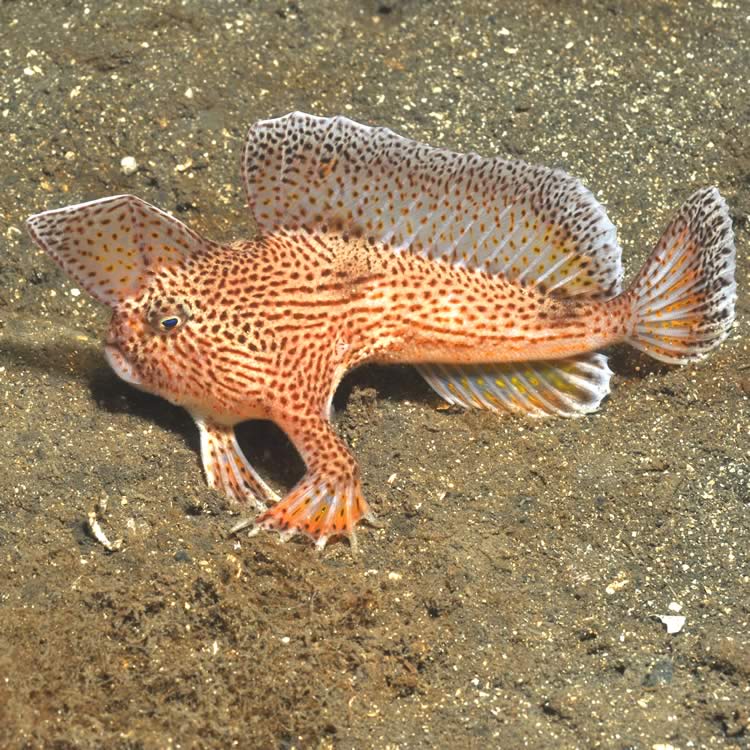Spotted handfish

Habitat type
Rocky reefs, kelp beds and inter-tidal zone
Spotted handfish (Brachionichthys hirsutus) are one of Derwent Estuary’s most iconic creatures. They are a very special fish, not only for their quirky and striking appearance, but also because the vast majority only live within our estuary, and are highly endangered.
Spotted handfish are small; they only grow to a maximum size of 12 cm and could fit within the palm of your hand. Each fish is covered with spots or stripes, in unique patterns.. The spotted handfish has overgrown pectoral fins which look like hands, which they use to slowly walk on the sandy sediment where they hunt for small crustaceans and worms. Fewer than 10 colonies exist with the Derwent Estuary. Spawning occurs from September to October, when freshly laid egg masses are attached to substrate living on the sea floor such as sponges, seaweeds and particularly sea tulips (ascidians).
The principle threat to spotted handfish appears to be reduced amount and distribution of spawning substrate to attach egg masses – particularly the stalked ascidian, which has been heavily preyed upon by the invasive northern Pacific seastar. In the absence of spawning substrate, eggs laid by spotted handfish are swept away in the current, and females cannot effectively guard their egg masses to make sure they hatch successfully. Poor recruitment of young fish will lead to the eventual extinction of colonies. Due to the speed of their decline in range and abundance the spotted handfish became the first marine fish to be listed as endangered under the Federal Environment Protection and Biodiversity Protection Act 1999, and was followed by state protection under Tasmania’s Threatened Species Protection Act 1995. Priority actions to address key threatening processes are listed in the Australian Government's 2015 Recovery Plan for Three Handfish species.
Since 1996, management actions have included: the collection of baseline biological data; examination of habitat requirements; development of techniques to assess population size and stability; monitoring of known colonies; surveys of new potential habitat; development of artificial spawning substrate; and, the establishment of captive husbandry protocols. The DEP has previously received several Australian Government grants to support this work, and works with local yacht clubs and NRM South to promote the use of eco-moorings in areas with spotted handfish colonies, as traditional chain moorings tear up handfish habitat and dislodge their eggs, The CSIRO is also undertaking additional surveys and research, supported by the Australian Government’s National Environmental Science Program.
You can find out more about spotted handfish ecology and management by following the links below.
- Fishes of Australia: spotted handfish page (including videos)
- Monitoring of spotted handfish populations and on ground conservation actions (CSIRO, 2017)
- Our news article on timing of maintaining boat moorings that can help the spotted handfish
- Handfish Conservation Project - Launched in 2018 to raise awareness and money for handfish conservation work.
